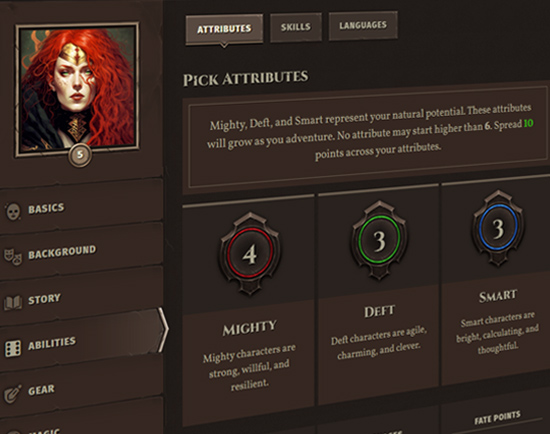A setting overview document is an optional, in-depth exploration of your premise, to be presented to players before session zero. This optional document is a place for you to share details of your world as a formalized Pinterest board of what you have in mind for the adventure. If you're not running a session zero (the adventure will be a one-shot), then this document would take the place of session zero in introducing the players to the world, in lieu of the pitch deck.
Imagine the setting overview as the jacket cover and marketing copy on the back of a book, meant to sell the reader on the premise. Here are two examples of setting docs for two different upcoming worlds of OSR+, Ride the Lightning and God Beyond the Portal:
What's in a Setting Overview?
In the setting overview, we try to dive deeper on a number of topics related to the premise:
- The physical setting of the fiction (where the game will take place);
- What sort of special game mechanics or optional rules you'll be using;
- Any interesting facts about the fiction you think players should consider;
- What players should do to prepare for session zero (or if this is a one-shot, for the actual game)
- The archetypes, if any, that are available for use in the game.
About Archetypes
If you are running your game in a world of OSR+, the system will provide archetypes for players to choose from. You'll see the ones from Ride the Lightning appended at the end of the overview doc as an example. These narrative roles are specific to each world of OSR+ and function similarly to kits or classes, in that they impart a special ability PCs can use in the game.
From a gamemastery perspective, the purpose of archetypes is to situate players in a particular genre, similar to how playbooks in Powered by the Apocalypse games replace classes in traditional RPGs. For example, if the setting was the Wild West, archetypes might include "The Lawman" and "The Lady of the Evening" and "The Bandit": the sort of fictional archetypes you'd expect to pop up in such a genre of storytelling.
 Archetypes
Archetypes Armor
Armor Classes
Classes Conflicts
Conflicts Cultures
Cultures Ethos
Ethos Flaws
Flaws Glossary
Glossary Kits
Kits Maleficence
Maleficence Origins
Origins Shields
Shields Skills
Skills Spells
Spells Stances
Stances Status Effects
Status Effects Tactics
Tactics Talents
Talents Techniques
Techniques Treasure
Treasure Weapons
Weapons











 Hall of Heroes
Hall of Heroes Hall of Legends
Hall of Legends



 Dungeons & Flagons
Dungeons & Flagons